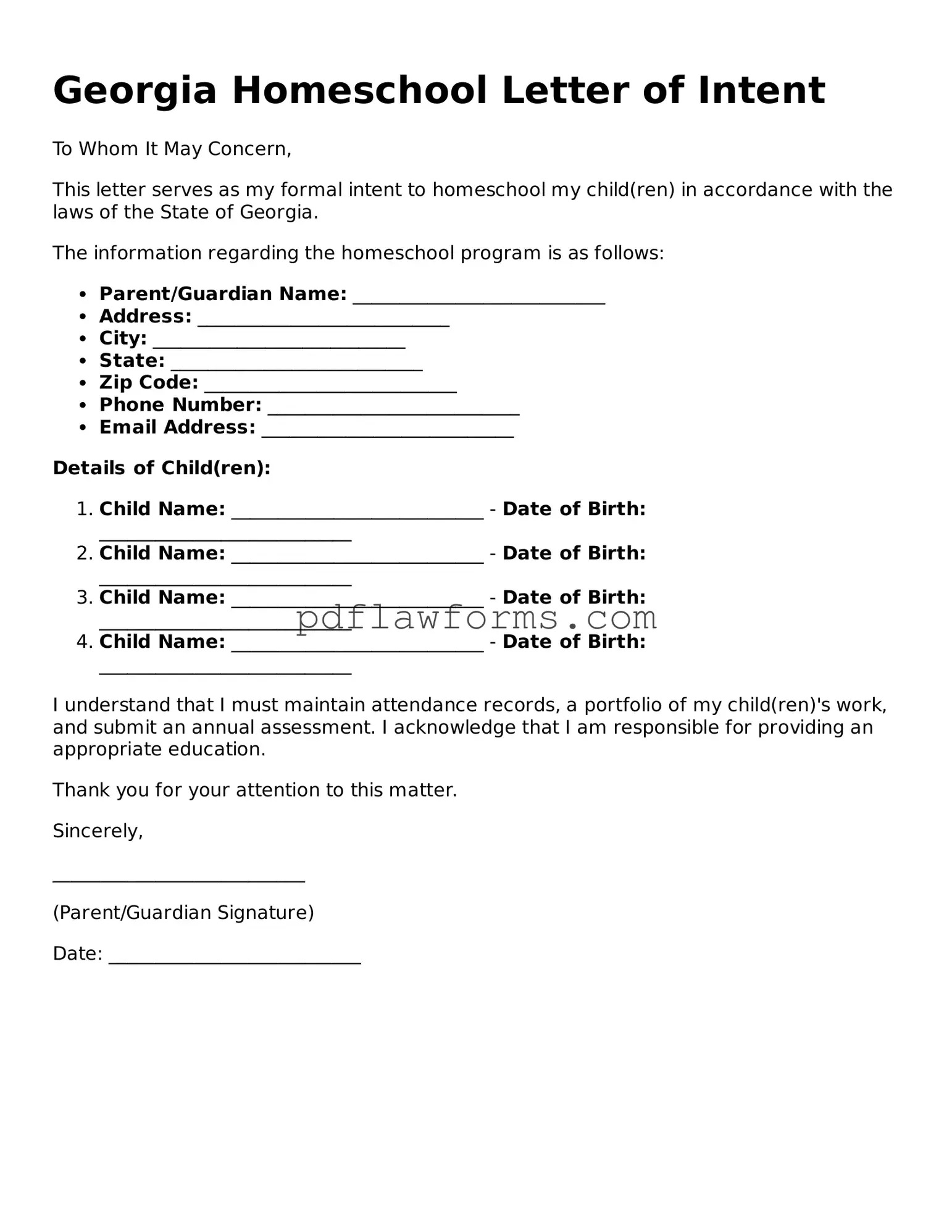In Georgia, families choosing to homeschool their children must navigate a few essential steps to comply with state regulations, one of which is the completion of the Homeschool Letter of Intent form. This form serves as a formal notification to the local school district that a family intends to educate their child at home. It requires parents or guardians to provide basic information, such as the names and ages of the children being homeschooled, along with the address of the residence where the homeschooling will take place. Additionally, the form must be submitted within 30 days of beginning the homeschooling process or within 30 days of the start of the school year. It is also important to note that while the form is relatively straightforward, it plays a critical role in ensuring compliance with Georgia’s homeschooling laws. By submitting this letter, families not only fulfill a legal obligation but also take an important step in establishing their educational framework. Understanding the nuances of this form can empower parents to confidently embark on their homeschooling journey, laying the groundwork for a successful educational experience tailored to their children's unique needs.
